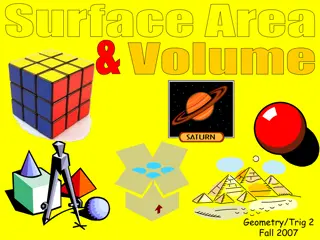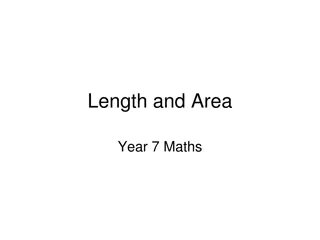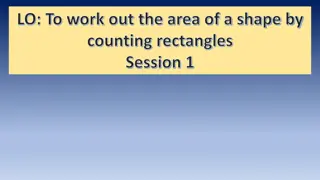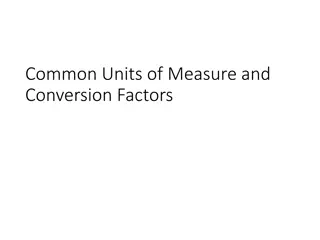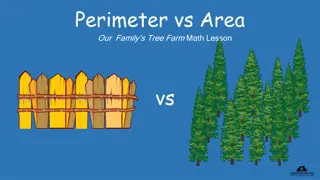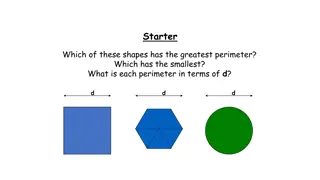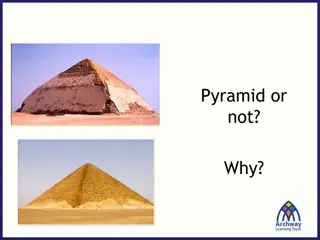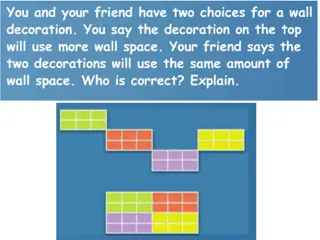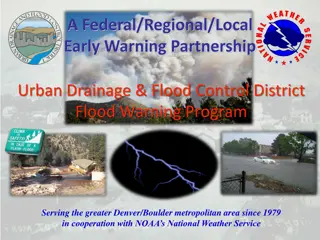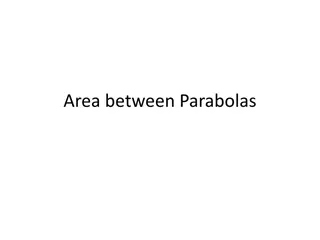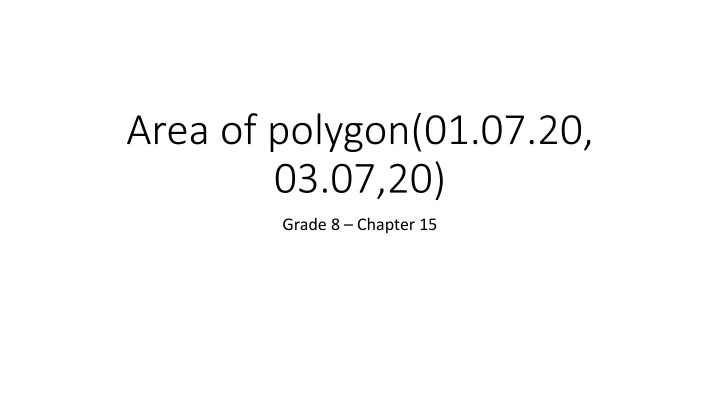
Polygon Area Calculations in Mathematics
Learn how to find the area of polygons in geometry with examples and step-by-step solutions. Explore the concept of breaking down complex shapes to simplify calculations and improve understanding.
Download Presentation

Please find below an Image/Link to download the presentation.
The content on the website is provided AS IS for your information and personal use only. It may not be sold, licensed, or shared on other websites without obtaining consent from the author. If you encounter any issues during the download, it is possible that the publisher has removed the file from their server.
You are allowed to download the files provided on this website for personal or commercial use, subject to the condition that they are used lawfully. All files are the property of their respective owners.
The content on the website is provided AS IS for your information and personal use only. It may not be sold, licensed, or shared on other websites without obtaining consent from the author.
E N D
Presentation Transcript
Area of polygon(01.07.20, 03.07,20) Grade 8 Chapter 15
Polygon A polygon is a closed shape that has at least three sides. Triangles, quadrilaterals, rectangles and squares are all types of polygons. Moreover, a polygon can be of any shape and can have any number of sides. There is no specific formula for calculating the area of a polygon. The best way is to split the polygon into shapes whose area can be calculated individually.
Example 1 Find the area of the given polygon PQRSTU
Solution Area of the Polygon PQRSTU = Area of PMTU + Area of MNST + Area of NQRS
Area of PMTU(Trapezium) a=9 cm, b= 18cm, h = 3 cm Area of trapezium = x h x (a+b) sq. units = x 3 x(18+9) =81/2 sq. cm
Area of MNST(rectangle) l= 18 cm, b= 9 cm Area of rectangle = l x b sq. units = 18 x 9 = 108 sq cm
Area of NQRS(Trapezium) Area of NQRS = Area of PMTU = 81/2 sq. cm
Area of the Polygon PQRSTU = Area of PMTU + Area of MNST + Area of NQRS = 81/2 +108 + 81/2 = 162/2 + 108 = 81 + 108 = 189 sq.cm
Example 2 Find the area of the polygon ABCDEFGH
Area of the Polygon ABCDEFGH = Area of ABEF + Area of ECD + Area of FGH
GHF is a right triangle HF2+ GH2= GF2(Pythagoras theorem) HF2= GF2- GH2 = 52- 32 = 25 9 = 16 HF = 4 cm
Area of ABEF(rectangle) l= 8 cm, b= 6 cm Area of rectangle = l x b sq. units = 8 x 6 = 48 sq cm
Area of GHF (triangle) b = 3 cm, h = 4 cm Area of GHF = x b x h sq units = x 3 x 4 = 6 sq cm
Area of DCE (triangle) b = 3 cm, h = 4 cm Area of DCE = x b x h sq units = x 3 x 4 = 6 sq cm
Area of the Polygon ABCDEFGH = Area of ABEF + Area of ECD + Area of FGH = 48 sq.cm + 6 sq.cm + 6 sq.cm = 60 sq cm
Exercise 15.2 1. Find the area of each of the polygon






